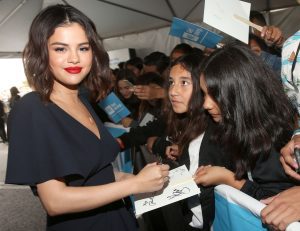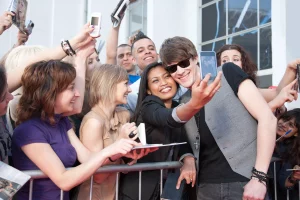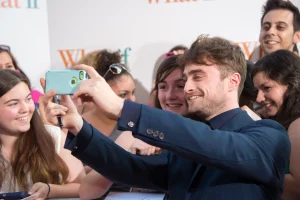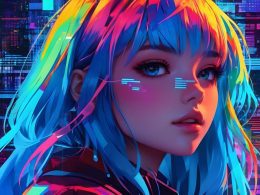Introduction
In today’s digital age, the interplay between fan communities and media content has become increasingly significant. Fan communities, often referred to as fandoms, have evolved from being mere passive consumers to active participants in the media landscape. This article explores the multifaceted role that fan communities play in shaping media content, delving into various aspects such as their influence on creative processes, marketing strategies, and even the evolution of media platforms.
The Evolution of Fan Communities

-
Early Beginnings
Fan communities have existed for as long as popular media itself. In the early 20th century, fan clubs for movie stars and literary figures began to emerge. These early fan communities were relatively small and localized, often communicating through newsletters and fan conventions.
-
The Internet Era
The advent of the internet revolutionized fan communities. Online forums, social media platforms, and fan websites provided new avenues for fans to connect, share their passion, and collaborate on projects. This digital transformation allowed fan communities to grow exponentially, transcending geographical boundaries and reaching a global audience.
The Influence of Fan Communities on Media Content

-
Creative Input and Feedback
One of the most significant ways in which fan communities shape media content is through their creative input and feedback. Creators and producers often monitor fan discussions and forums to gauge audience reactions and preferences. This feedback loop can lead to changes in storylines, character development, and even casting decisions.
For example, the popular TV series “Sherlock” saw its creators, Steven Moffat and Mark Gatiss, actively engaging with fan theories and discussions. This interaction influenced the narrative direction of the show, demonstrating the impact of fan communities on creative decisions.
-
Fan Fiction and Fan Art
Fan fiction and fan art are other avenues through which fan communities contribute to media content. These creative endeavors allow fans to explore alternative storylines, character pairings, and universes. While fan fiction and fan art are often considered unofficial, they can inspire official content.
The “Harry Potter” series by J.K. Rowling is a notable example. The extensive body of fan fiction and fan art surrounding the series has not only kept the fandom alive but also inspired official spin-offs and adaptations, such as “Fantastic Beasts and Where to Find Them.”
-
Crowdsourcing and Collaboration
Fan communities also play a crucial role in crowdsourcing and collaborative projects. Platforms like Kickstarter and Patreon have enabled fans to directly support creators and projects they are passionate about. This financial backing can lead to the production of new content that might not have been possible through traditional funding methods.
The success of the web series “The Guild,” created by Felicia Day, is a testament to the power of fan communities in crowdfunding and collaboration. The series, which depicts the lives of online gamers, was funded through fan contributions and became a cult hit, eventually leading to a distribution deal with Microsoft.
Marketing and Promotion

-
Viral Marketing
Fan communities are instrumental in the marketing and promotion of media content. Their enthusiasm and dedication can drive viral marketing campaigns, creating buzz and anticipation for upcoming releases. Social media platforms like Twitter, Instagram, and TikTok are often abuzz with fan-generated content, including memes, trailers, and promotional art.
The Marvel Cinematic Universe (MCU) has effectively leveraged fan communities for marketing purposes. The release of teasers and trailers often sparks widespread discussion and speculation within the fandom, generating free publicity and increasing anticipation for new films.
-
Grassroots Campaigns
Fan communities have also been known to spearhead grassroots campaigns to support or save their favorite shows and franchises. These campaigns can range from online petitions to organized social media movements. In some cases, fan campaigns have successfully influenced network decisions and led to the revival of canceled shows.
The “Save Our Show” campaign for the TV series “Brooklyn Nine-Nine” is a prime example. When the show was canceled by Fox, fans rallied on social media, leading to its revival by NBC within 31 hours of the cancellation announcement.
The Evolution of Media Platforms

-
Interactive and Immersive Experiences
The rise of fan communities has prompted media platforms to evolve, offering more interactive and immersive experiences. Streaming services, video games, and virtual reality (VR) platforms have incorporated features that allow fans to engage with content in new and innovative ways.
For instance, the video game “Fortnite” has hosted virtual concerts and events, allowing fans to participate in real-time and interact with their favorite artists and characters. These immersive experiences have redefined the boundaries of traditional media consumption.
-
User-Generated Content
User-generated content (UGC) has become a cornerstone of modern media platforms. Platforms like YouTube, TikTok, and Twitch thrive on content created by users, many of whom are passionate fans of various media franchises. UGC not only provides entertainment but also fosters a sense of community and belonging among fans.
The success of YouTube channels dedicated to reviewing, analyzing, and discussing media content underscores the importance of fan-generated content. These channels often attract large audiences and can influence public perception and reception of media content.
Conclusion
Fan communities have undeniably become a driving force in shaping media content. Their creative input, feedback, and collaborative efforts have influenced the creative processes of media creators, while their enthusiasm and dedication have fueled marketing and promotional campaigns. Furthermore, the evolution of media platforms has been significantly impacted by the rise of fan communities, leading to more interactive and immersive experiences.
As the media landscape continues to evolve, the role of fan communities is likely to become even more pronounced. Understanding and harnessing the power of these communities will be crucial for creators, producers, and marketers in the ever-changing world of media.
In conclusion, fan communities are not just passive consumers; they are active participants and co-creators in the media ecosystem. Their influence extends beyond mere consumption, shaping the very content they love and ensuring its continued relevance and success in an increasingly interconnected world.












